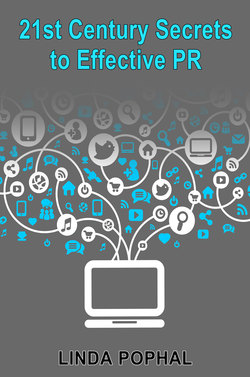Читать книгу 21st Century Secrets to Effective PR - Linda Pophal - Страница 5
На сайте Литреса книга снята с продажи.
The Power of PR Messaging
ОглавлениеConsumer perceptions generally are influenced in four ways. In order from most to least impactful they are:
•Through their own experiences — trying a new restaurant, for example
•Through recommendations from others (word-of-mouth)
•Through what they read or hear about companies, products, services and service providers via various trusted media channels — channels that, to maintain that trust, must use respected gatekeepers to discern “facts”
•Through messages that organizations and individuals share about themselves through traditional advertising, websites and online communications (including Twitter and other social media channels)
We trust our own experiences. We trust respected friends, relatives and colleagues. And, to a certain degree, despite a media environment where trust is at an all-time low, we continue to trust certain media outlets.
Traditional advertising, while diminishing in value, is still important and still has the power to influence if done effectively. Public relations is gaining in impact, I believe, because of the ability to leverage online communities and social media outlets to spread the word in ways that capitalize on personal and word-of-mouth recommendations that can be positively affected through online PR efforts.
In an increasingly competitive — and global — business environment, PR is a necessity. Organizations and individuals absolutely need to manage their brands, their images and the perceptions of consumers toward the products and services they offer. They can do this through a strategic focus on public relations as part of the overall promotional mix (that will include traditional advertising, events, etc.). To do this effectively, businesses must fully understand their audiences, what those audiences want, and how what they have to offer can help to meet those needs — all while also considering how their offerings, and audience perceptions, are affected by competitors.
Ideally, your overall goal with your public relations efforts should be to get those third-party influencers — whether media outlets, bloggers or participants in online conversations — saying the same things about you that you are saying about yourself. The closer the messaging across all channels, the more positive the impact on your brand. The greater the disparity between these messages, the more your brand will suffer and the more trust in your brand will erode.
I started Strategic Communications in 2008 and, at that time, assumed that my work with organizations and individuals would involve both traditional and digital marketing along with a heavy dose of traditional PR or media relations. What I’ve found, though, is that much of our work today is focused on PR through a combination of outreach designed to gain coverage through various media outlets and the use of social media channels and content marketing. These efforts work together to drive that all-important word-of-mouth, which studies continue to show has the most significant impact on both business-to-consumer (B2C) and business-to-business (B2B) purchase behaviors.
The internet and social media have impacted the power of word-of-mouth immensely. Satisfied customers and clients tell others about their experiences, as do unsatisfied customers, and reputations are built — or destroyed.
Businesses can nurture the recommendations they receive through their services and quality as well as through leveraging and extending that communication through other means that might include traditional PR or online social media efforts. The “big value” in PR-related communications is that the messages come from someone else — others talking about us and saying, basically, the same things that we would say. But, again, the fact that others are saying these things wields significant power.
Years ago, with limited choices for products and services and limited communication venues to hear about those products and services, companies could offer a product and expect customers to buy it. Customers had limited knowledge of what else might be available — they were part of captive markets. Customers aren’t captive anymore. They are not only able to be more aware of competitive offerings available around the globe (rather than through our local vendors), but also able to find out about what other people think about those products and services like never before.
It’s word-of-mouth on steroids.
What do businesses need to do to survive and thrive in this environment? The same things they’ve always needed to do, but the pressure has intensified. They need to:
•Find a niche that isn’t being filled effectively and fill it.
•Thoroughly understand market needs and competitive pressures.
•Provide a product/service that customers value.
•Make sure customers know about and have easy access to their product/service.
•Listen and be ready to adapt and shift as the environment changes.
PR today isn’t just about influencing traditional reporters to cover you and your products and services in their traditional publications.
PR today is about influencing anyone with an audience to spread the word.
In a world of “citizen journalists,” you can benefit from PR on steroids. Traditional journalists and reporters are still important, but savvy communicators know that any third-party recommendations, referrals or endorsements matter — always have and always will.
Easy? No. Rewarding? It can be. In this book, we’ll offer advice and expertise based on experience on both sides of the PR equation — from the standpoint of business journalists who often receive pitches or responses to queries from those seeking media exposure, and from the standpoint of a consulting firm that works to gain positive media exposure for our clients.
